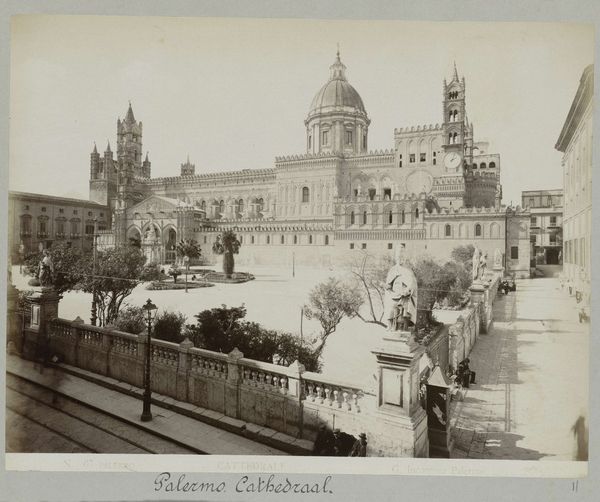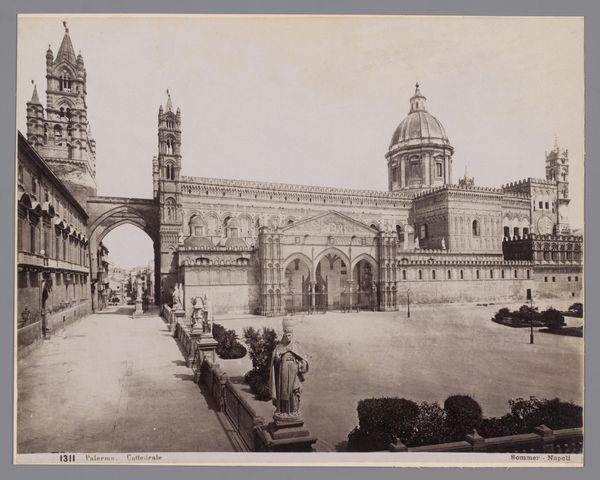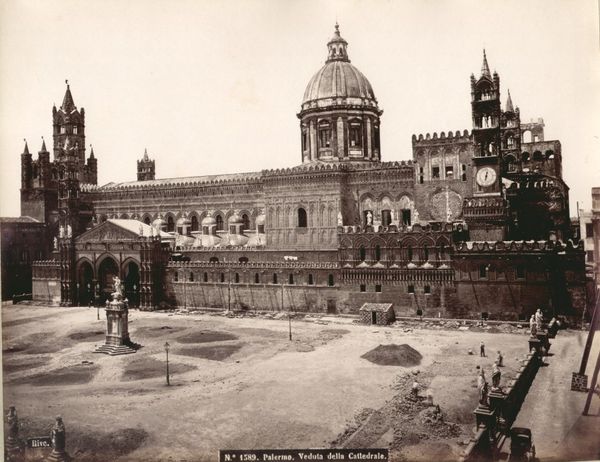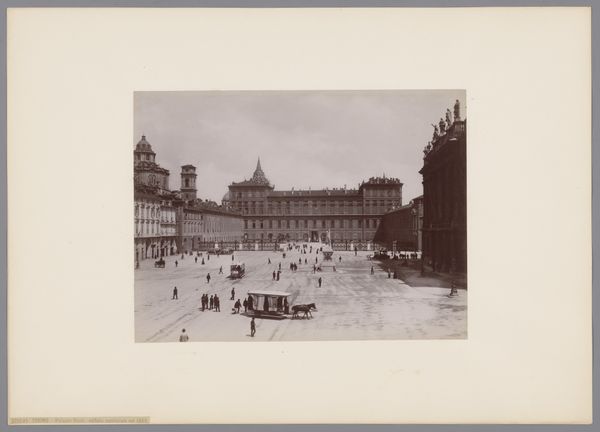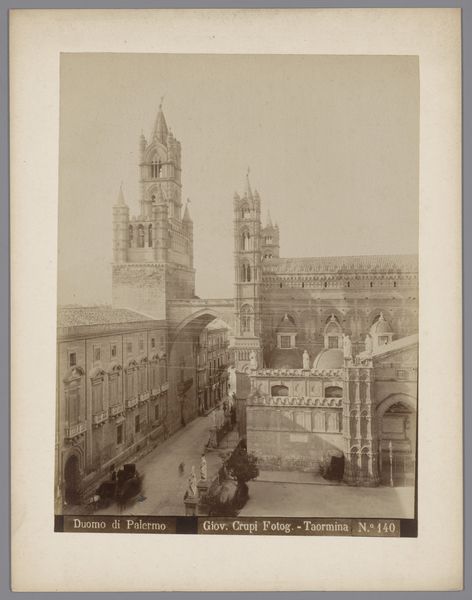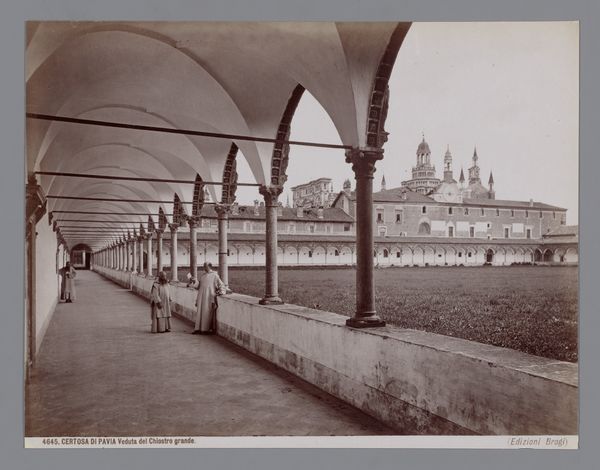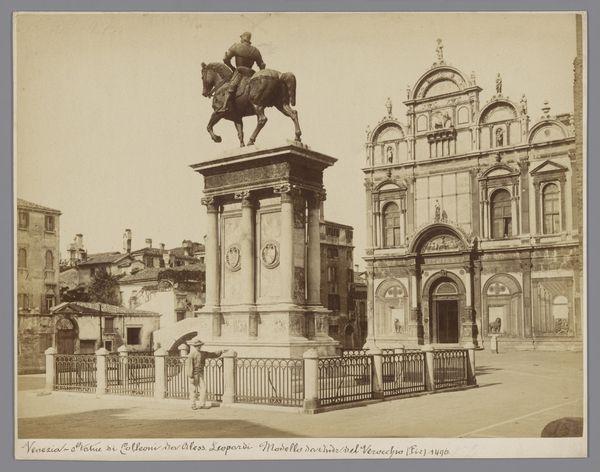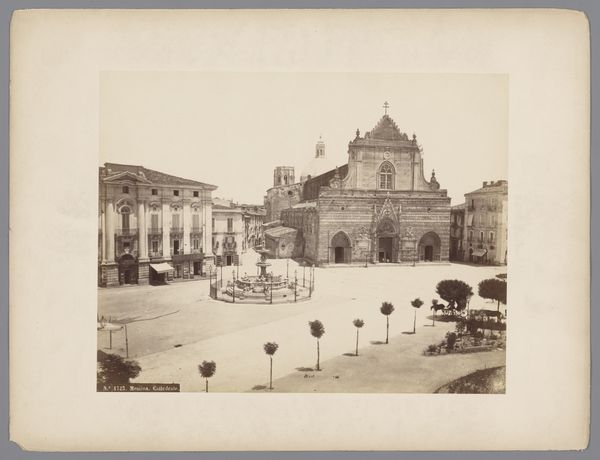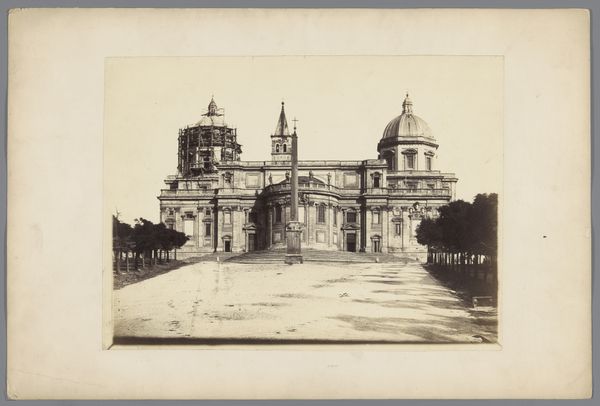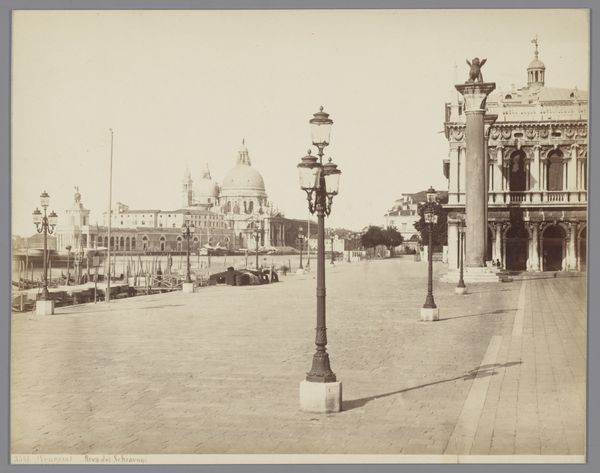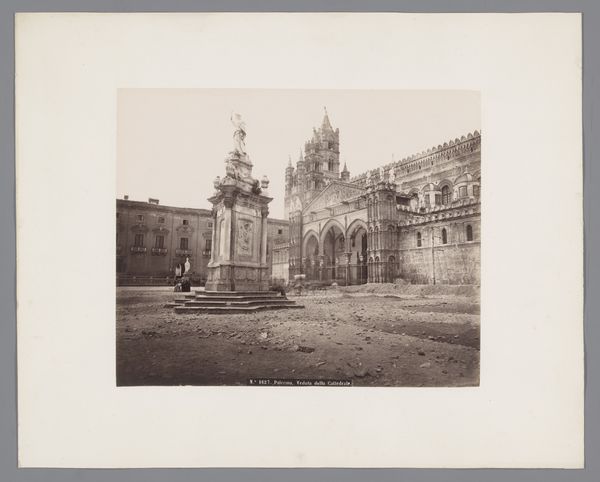
photography, sculpture, gelatin-silver-print, architecture
#
sculpture
#
landscape
#
historic architecture
#
photography
#
sculpture
#
gelatin-silver-print
#
19th century
#
cityscape
#
islamic-art
#
architecture
#
historical building
#
statue
Dimensions: height 199 mm, width 255 mm
Copyright: Rijks Museum: Open Domain
Editor: Here we have Giorgio Sommer's "View of the Cathedral of Palermo," taken sometime between 1857 and 1914, a gelatin silver print capturing the impressive scale of this religious structure. What aspects of the photograph stand out to you? Curator: It’s striking how Sommer captures the Palermo Cathedral. Not just as a building, but as a contested space, reflecting centuries of shifting power dynamics in Sicily. Editor: Contested? How so? Curator: Look at the architectural styles: Norman, Arab, Byzantine. It is the result of diverse cultural influences clashing and merging. Understanding those dynamics and the socio-political currents helps reveal layered meanings behind it. It’s never just architecture, it’s a history etched in stone, expressing colonial interactions and cultural appropriation. Even the very act of photographing it at this time carries layers of meaning. Editor: So, Sommer's photograph isn’t just documentation; it's also a statement about cultural identity? Curator: Absolutely. And by viewing through an intersectional lens, considering race, class, and power structures, we get a far richer interpretation. How does the Cathedral present itself in the landscape? Who does it serve, and whose stories are silenced within those walls? Consider this image through post-colonial and feminist theory frameworks; how does the structure dominate the space, both physically and ideologically? Editor: That’s given me a whole new perspective. It makes me want to examine other architectural photographs in a similar light. Curator: Indeed. Considering history alongside visual elements truly helps broaden and deepen our interpretation of art.
Comments
No comments
Be the first to comment and join the conversation on the ultimate creative platform.

